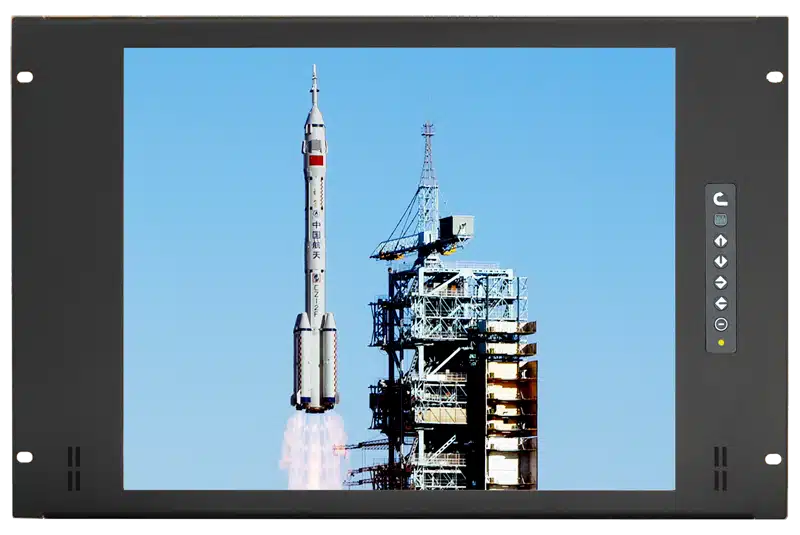As our organization rapidly scaled server capabilities across multiple colocation facilities, our IT team constantly struggled monitoring hardware health buried within densely-packed data center racks. Once upgrading to rack mount LCD panels for enhanced visibility into environmental metrics and operating conditions of business-critical infrastructure, we encountered frustrating compatibility limitations impeding operational integration.
Through iterative learning while tweaking deployed LCD panel models and configurations, combined with firmware adjustments adapting to unique legacy hardware assets, we overcame the majority of interoperability challenges that initially hindered realizing full value after significant panel investments. Here I’ll provide an overview explaining the critical factors influencing rack mount LCD panel compatibility along with best practices delivering trouble-free, long-term equipment monitoring.
- Unveiling Compatibility Aspects: Delving into Rack Mount LCD Panels
- Compatibility Factors in Rack Mount LCD Panels
- Assessing Compatibility for Optimal Rack Mount LCD Panel Selection
- Overcoming Compatibility Challenges with Rack Mount LCD Panels
- Compatibility Verification and Testing in Rack Mount LCD Panels
- Future-Proofing Compatibility with Rack Mount LCD Panels
- Conclusion: Navigating Compatibility for Optimal Rack Mount LCD Panel Utilization
Unveiling Compatibility Aspects: Delving into Rack Mount LCD Panels
At surface level, Universal rack mount LCD panels marketed as platform agnostic for simply displaying standard IT metrics like temperature and humidity seem deceptively easy to incorporate across random server room infrastructure. However, lack of backwards compatibility, incomplete protocols support and unforeseen conflicts often complicate otherwise straightforward monitoring deployments. Let’s peek behind the curtain at common compatibility stumbling blocks:
Legacy Server OS Interfaces
- Vintage serial ports on proprietary platforms choke trying to communicate modern LCD protocols
Incompatible Bus Speeds
- Older device bus speeds mismatch latest LCD panel response times hampering reliable data transfers
Fixed LCD Interface Protocols
- Absence of firmware adjustments on LCD panels to adapt to unique device interfaces prevents integration
Custom Metrics Limitations
- Canned metric categories offered by mainstream LCD panels fail addressing exotic server measurements
First-Generation Device Constraints
- Legacy hardware utilizes obsolete protocols unsupported on newer LCD model revisions
Insufficient LCD Panel Memory
- Older embedded LCD systems choke attempting to log/display increased metric resolution from modern equipment
While these largely prove solvable through updated firmware, added interfaces adapters or purchasing premium customizable LCD panels, factoring compatibility early when evaluating display options smoothens successful deployment. Now let’s shift focus to compatibility essentials influencing rack mount panel selection.

Compatibility Factors in Rack Mount LCD Panels
Rack mount LCD panels connect locally to equipment for monitoring via integrated wired interfaces like USB ports. Certain advanced models also enable remote network-based device polling through LAN protocols.
The following factors dictate LCD compatibility:
Physical Display Interfaces – Panels outputting legacy analog VGA prevent sharp digital display mirroring. Prioritize modern HDMI/DisplayPort outputs when possible.
Local Data Protocols – USB remains today’s common wired connectivity option between panels and monitored gear. Verify interface revisions match before purchase.
Remote Monitoring Protocols – If planning network-based oversight, the supported LAN protocols like SNMP must match existing data center systems or hold options for adding plugins enabling backward compatibility.
Metrics + Threshold Flexibility – Custom LCD panels allow tuning exposed measurements with tailored alert thresholds ideal for exotic non-standard hardware that fixed models don’t accommodate.
Integrated Proxy Features – Some panels incorporate protocol translation allowing bridging communication gaps between newer monitoring systems and aged server hardware outputs.
While physical wired interfaces enable basic local monitoring for most equipment, purchasers seeking forward-looking remote visibility through IT management dashboards should prioritize panels featuring tunable LAN outputs supporting common platforms. Compatibility factors require heightened consideration in such use cases.
Assessing Compatibility for Optimal Rack Mount LCD Panel Selection
Ideally proactive compatibility evaluations occur before rack mount LCD purchase orders get submitted to avoid post-deployment heartaches stifling expected monitoring functionality and visibility ambitions:
Determine Equipment Universe Requiring Monitoring
Catalog all server models, network switches and related hardware requiring supervision along with corresponding legacy vs modern status. Also project future infrastructure additions on the roadmap that LCD panels should accommodate as data centers scale up.
Identify Monitoring System Compatibility Requirements
Pinpoint existing management platforms that must ingest telemetry from rack mount LCD panels for remote monitoring like nagios, PRTG or proprietary DCIM (data center infrastructure management) solutions. Note specific protocol versions supported.
Establish Must-Have Features
Outline the exact types of metrics necessary for measuring server health from LCD panels – for example, fan speeds, storage capacity, power draw variances. Also define baseline LCD display specs like optimal pixel densities.
Research Rackmount LCD Models Fulfilling Compatibility Needs
Cross reference findings from all above assessments to narrow down specific LCD panels guaranteed meeting wired interfaces, remote monitoring protocols and custom metrics criteria across existing and planned future hardware assets. This validates technical compatibility.
Performing advance compatibility research around current and future server room ecosystem needs before LCD purchasing eliminates potential integration issues down the road while illuminating gaps prompting further site enhancements like added network infrastructure required taking full advantage of rack mount display panels. Now we’ll tackle resolving common compatibility hurdles.
Overcoming Compatibility Challenges with Rack Mount LCD Panels
Despite best efforts selecting optimal rackmount LCD models catering to unique pre-validated hardware environments through methodical compatibility analysis beforehand, reality reminds technology rarely unfolds smoothly as unexpected compatibility speed bumps still emerge requiring creative workarounds:
Scenario One – Legacy serial interfaces on vintage hardware lacked upgrades preventing native USB connectivity expected by rack mount LCD panels. Resolution: Serial-to-USB terminal emulation adapters added supporting legacy connectivity.
Scenario Two – Custom server metrics like application license utilization weren’t exposed natively to rack mount LCD panels requiring SNMP outputs. Resolution: Added open source middleware bridged custom app metrics onto SNMP channel consumed by Rack LCDs.
Scenario Three- Latency bottlenecks during storage failovers throttled LCD response times. Resolution: Accuracy delays proved acceptable tradeoff for large consolidated visibility gains after wiring modifications would have proved complicated.
Scenario Four – Remote visibility hampered by dated network switches lacking modern SNMP protocols prevalent on rack mount LCD panels. Resolution: Phased switch upgrades prioritized aggregating telemetry feeding centralized dashboard.
As demonstrated above, stubborn legacy hardware and dated site infrastructure can motivate compatibility workarounds or phased modernization efforts unlocking full rack mount LCD panel monitoring potential. Temporary tolerances or creative software interventions resolve most issues assuming LCD selection got vetted thoroughly upfront.
Compatibility Verification and Testing in Rack Mount LCD Panels
Once rackmount LCD panel orders arrive ready for deployment, methodical on-site testing helps validate promised compatibility across selected equipment inventory before time-intensive production installation:
Physical Mounting Check
Verify precise LCD dimensions and mounting bracket alignments allow integrating onto existing rack frames without obstruction or clearance issues before permanently fastening displays.
Interface Connection Confirmation
Test-connect server/switch data cables and electricity to panel interfaces validating responsive power-up sequences and information handshakes confirming out-of-box hardware compatibility.
Feature Validation
Cycle through LCD menu options ensuring configurable selections like exposed metrics or data logging engage correctly reflecting feature sets documented during product selection phase proving specifications hold up.
Monitoring System Compatibility Check
If utilizing remote centralized management platforms, add LCD panels as monitoring channel endpoints checking for positive data transactions transmitting correctly onto dashboards which will facilitate remote visibility after deployment.
While seemingly tedious, on-site pre-installation validation eliminates doubts around claimed model capabilities and site compatibility saving significant replacement hassles down the road after deploying into production environments.
Future-Proofing Compatibility with Rack Mount LCD Panels
With rapid advances in connected device instrumentation and data center analytics, rack mount LCD panel connectivity must keep pace as infrastructure gets refreshed to optimize visibility. Here are best practices ensuring continued interoperability:
Prioritize Tunable Firmware
Seeking LCD models featuring field upgradable firmware to enable added protocol support in future along with customization addressing unique metrics unlocks lasting value.
Leverage Middleware Tools
Deploying scriptable middleware shuttling between enhanced LCD capabilities and aging static legacy server outputs bridges compatibility gaps to protect metrics continuity through generations of server infrastructure.
Phase Large Implementations
Pilot rack mount LCD rollouts on targeted racks to validate operational integrations plus visible value before large investments better informing total compatibility requirements.
Design Flexible Network Environments
Spec excess bandwidth/protocol headroom allowing increased data flows between LCD panels, servers and monitoring systems as improved telemetry and equipment analytics mature over time.
Building marginal compatibility support directly into monitoring architectures allows rackmount LCD panels delivering value well into next generation server facility upgrades.
Conclusion: Navigating Compatibility for Optimal Rack Mount LCD Panel Utilization
The operational visibility and metrics awareness enabled by quality rackmount LCD panels unlocks invaluable uptime advantages monitoring business critical infrastructure. However compatibility challenges occasionally arise impeding deployment for both legacy hardware environments and future-facing monitoring ecosystems.
Careful due diligence assessing precise interfacing requirements along with proactive testing during initial integration combined with adaptive middleware tools bridging inevitability protocol improvements across generations of server architecture sustains maximum LCD panel utilization over enduring equipment lifecycles. Organizations investing methodically into LCD visibility reap substantial rewards seeing tangible boosts in infrastructure resilience and IT team efficiency. So take time reviewing specific use case compatibility guideposts covered today when seeking enhanced oversight into the invaluable data center assets driving organizational success today and serving as foundation sustaining business vision into the next decade.
















